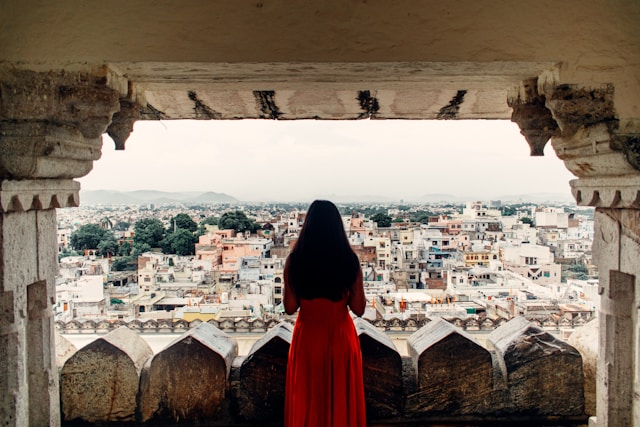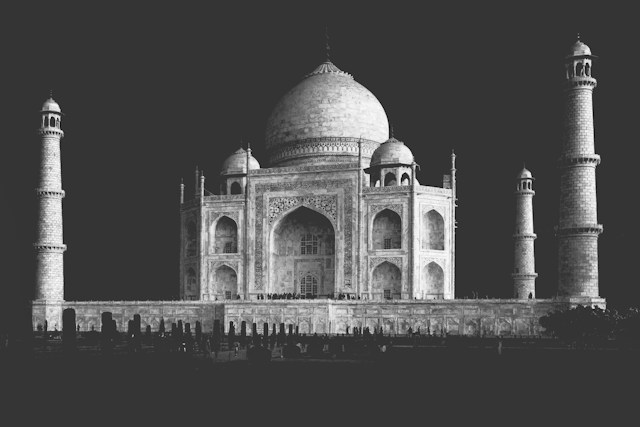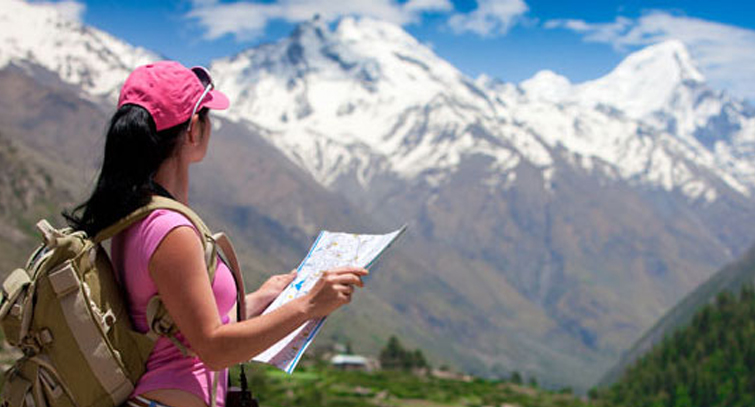In-depth tour of India’s UNESCO World Heritage sites
India’s UNESCO World Heritage Sites – Dreamlike India Holidays Guide
Best Times to Visit India’s UNESCO Sites
With a vast geographic expanse and varying climatic conditions, the ideal time to explore India’s World Heritage sites can differ based on your chosen destinations. However, the months between October and March generally offer pleasant weather and fewer crowds across most regions, making it a prime window for heritage travel.
For instance, the peak season for visiting the iconic Taj Mahal and other sites in the northern plains is from November to February, when the cooler, dry weather provides optimal conditions for sightseeing. Meanwhile, the southern states like Tamil Nadu and Kerala are best explored from December to February, avoiding the scorching summer heat.
It’s also worth considering aligning your visit with locally celebrated festivals and events that can add an extra layer of cultural immersion to your UNESCO experience. From the vibrant Holi celebrations in Mathura and Vrindavan to the mesmerizing Navaratri dance performances in Khajuraho, these traditions offer a unique glimpse into India’s living heritage.
Top 9 Must-Visit UNESCO World Heritage Sites in India
-
-
Taj Mahal, Agra
A true marvel of Mughal architecture and undoubtedly India’s most iconic monument, the Taj Mahal is a sight to behold, especially at sunrise when its marble façade is bathed in a warm, ethereal glow. Built as a grand mausoleum by Emperor Shah Jahan as an ode to his beloved wife Mumtaz Mahal, this exquisite complex is a masterclass in intricate craftsmanship and symmetry.

-
Ajanta and Ellora Caves, Aurangabad
These ancient rock-cut cave complexes, dating back to the 2nd century BCE, are a breathtaking showcase of India’s artistic and architectural prowess through the ages. The Ajanta Caves, with their exquisite Buddhist murals and sculptures, transport you to an era of spirituality and artistic expression, while the nearby Ellora Caves, comprising Hindu, Buddhist, and Jain monuments carved into a massive basalt cliff, are a testament to the region’s religious diversity and harmony.

-
Agra Fort, Agra
A formidable red sandstone fortress built by the Mughal emperors, Agra Fort is a UNESCO World Heritage Site that stands as a testament to the power and grandeur of the Mughal Empire. Explore its vast courtyards, palaces, mosques, and audience halls, offering glimpses into the once-opulent royal lifestyle.

-
Khajuraho Group of Monuments, Madhya Pradesh
Famous for their intricate carvings and sculptures, many of which are explicitly erotic, the Khajuraho Group of Monuments represents a pinnacle of Chandela Rajput architecture. Built between the 9th and 12th centuries, the sandstone temples embody a unique artistic style celebrating various forms of human desires.

-
Chhatrapati Shivaji Maharaj Terminus (formerly Victoria Terminus), Mumbai
An architectural masterpiece and functional railway station, the Chhatrapati Shivaji Maharaj Terminus is a grand example of Victorian Gothic Revival architecture with strong influences of traditional Indian styles. Admire its ornate stonework, arches, and vibrant details as a symbol of Mumbai’s dynamic energy and colonial heritage.
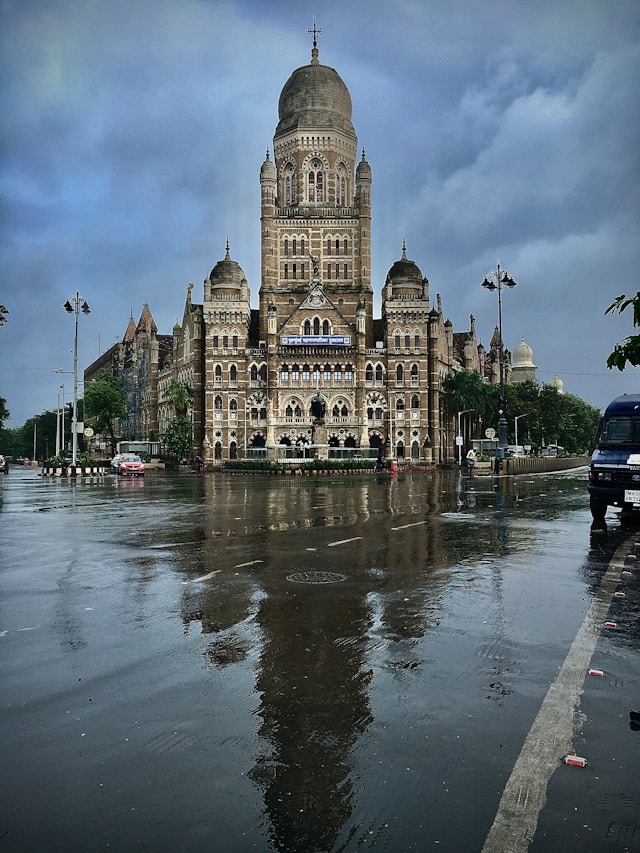
-
Sun Temple, Konark
Dedicated to the Sun god, Surya, the Sun Temple in Konark is a 13th-century marvel. Its unique chariot-shaped structure, intricate stone carvings, and massive wheels evoke awe and wonder. While partially ruined, its remains showcase the heights of Kalinga’s architectural heritage.
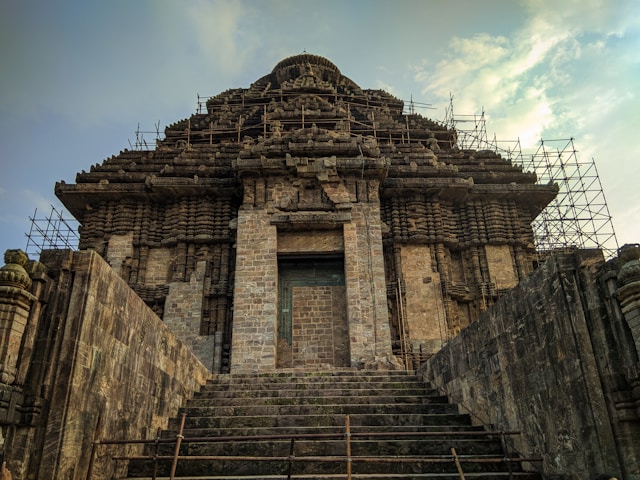
-
Rani ki Vav (the Queen’s Stepwell), Patan, Gujarat
An exceptional example of subterranean water architecture, Rani ki Vav is an inverted temple-like stepwell built in the 11th century. Its walls are adorned with intricate sculptures and carvings showcasing mythological and religious themes. A marvel of engineering and aesthetics.
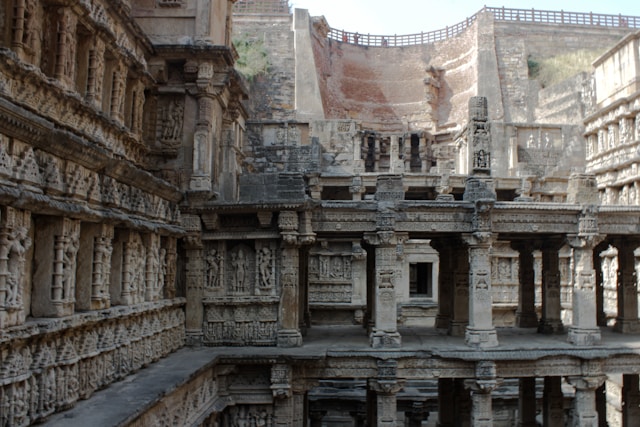
-
Hampi, Karnataka
Once the glorious capital of the Vijayanagara Empire, Hampi is now a vast open-air museum of ruins. Explore its temples, palaces, markets, and fortifications amidst a boulder-strewn landscape. Experience the grandeur of a bygone era.

-
Qutub Minar and its Monuments, Delhi
The towering Qutub Minar, a UNESCO World Heritage Site, is an early example of Indo-Islamic architecture and the tallest brick minaret in the world. Explore the surrounding complex with its ancient mosques, tombs, and the enigmatic rust-proof iron pillar.

-
Practical Tips for Hassle-Free UNESCO Site Visits
- Hire Local Guides: Engaging knowledgeable local guides can enrich your UNESCO site experience tremendously. They’ll provide invaluable context, share lesser-known stories, and help you navigate crowded sites with ease.
- Book Tickets in Advance: Many popular UNESCO sites like the Taj Mahal and Khajuraho Temples have timed entry slots or limit daily visitors. Purchasing tickets well in advance can save you from long queues and potential disappointment.
- Dress Appropriately: As several World Heritage sites are active places of worship, it’s essential to dress modestly, covering your shoulders and knees. Carry lightweight shawls or scarves for additional coverage when needed.
- Wear Comfortable Shoes: Exploring ancient monument complexes often involves navigating uneven terrain and climbing stairs. Invest in a good pair of walking shoes or sandals to ensure a comfortable sightseeing experience.
- Stay Hydrated: India can get quite hot, especially during the summer months. Always carry water bottles and stay hydrated, especially when visiting outdoor heritage sites.
Insider Secrets for Enriching Your UNESCO Experience
While the grandeur of India’s UNESCO World Heritage sites is undeniable, it’s the lesser-known stories, traditions, and local perspectives that truly bring these wonders to life. Here are some insider secrets shared by our expert guides and local partners:
- Spiritual Significance: Many ancient monuments like the Khajuraho Temples, Hampi, and Mamallapuram were not merely architectural marvels but held deep spiritual and mythological significance. Learning about these esoteric meanings can add a whole new layer of appreciation.
- Best Vantage Points: From the ideal spot to witness the Taj Mahal’s changing hues at sunrise to the perfect angle to capture the magnificence of the Gomateshwara statue in Shravanabelagola, locals know the best-kept secrets for unforgettable views and photographs.
- Living Heritage: India’s World Heritage sites are not merely relics of the past but living, breathing entities. Witness age-old traditions like the ceremonial lamp lighting at the Brihadisvara Temple in Thanjavur or the sacred rituals at the Sun Temple in Konark to truly appreciate their enduring cultural significance.
- Off-the-Beaten-Path Gems: From hidden cave paintings and secret Buddhist monasteries in the Ajanta and Ellora complexes to lesser-known natural wonders like the Valley of Flowers in the Himalayas, local experts can reveal the hidden gems that most tourists miss.
Explore India with Unforgettable Travel Experiences Dreamlike India Holidays Offerings
At Dreamlike India Holidays, we take immense pride in our deep-rooted connections with local communities and expert guides across India’s UNESCO World Heritage sites. Our team of passionate travel curators can provide you with exclusive access to restricted areas, behind-the-scenes experiences, and unique cultural interactions that truly bring these incredible destinations to life.
Whether you’re dreaming of an in-depth exploration of India’s architectural marvels like the Taj Mahal, Fatehpur Sikri, and Hampi, or a multi-faceted journey combining ancient monuments with natural wonders like the Western Ghats and Kaziranga National Park, we can craft a personalized itinerary tailored to your interests and preferences.
- Classical North India: Explore the timeless charm of India’s classical north, including Delhi, Agra, and Jaipur. Visit the Taj Mahal, the Red Fort, and the City Palace, and experience the rich culture of North India.
- Exotic Rajasthan: Experience the exotic land of Rajasthan, known for its forts, palaces, and desert landscapes. Visit the cities of Jaipur, Jodhpur, and Udaipur, and enjoy the local culture and cuisine.
- Golden Triangle of India: Uncover the magic of India’s Golden Triangle, including Delhi, Agra, and Jaipur. Visit the iconic Taj Mahal, the Red Fort, and the City Palace, and experience the rich history and culture of India.
- Western Ghats: Experience the natural beauty of Western Ghats, a UNESCO World Heritage Site. Explore the lush green landscapes, waterfalls, and wildlife sanctuaries in the states of Kerala, Karnataka, and Tamil Nadu.
- India and Nepal: Embark on a journey to India and Nepal, and experience the rich cultural heritage of both countries. Visit the iconic landmarks, temples, and monuments in India and Nepal, and enjoy the local cuisine and traditions.
- India’s Golden Triangle with a Twist: Discover India’s Golden Triangle with a twist, including Delhi, Agra, and Jaipur. This unique itinerary includes a visit to the Taj Mahal, the Red Fort, and the City Palace, as well as a wildlife safari in Ranthambore National Park.
- India and Nepal with a Spiritual Twist: Explore India and Nepal with a spiritual twist, including visits to the sacred cities of Varanasi and Kathmandu. Experience the local culture, traditions, and spiritual practices in these two countries.
- Indian Impression: Create lasting impressions with our Indian journey, including visits to the iconic landmarks, cultural experiences, and wildlife adventures. This itinerary includes visits to Delhi, Agra, Jaipur, and Ranthambore National Park.
- Karnataka and Goa: Discover the hidden gems of Karnataka and Goa, including the beautiful beaches, temples, and cultural experiences. Visit the cities of Bengaluru, Mysore, and Goa, and enjoy the local cuisine and traditions.
- North India Tour: Experience the rich culture of North India, including visits to Delhi, Agra, Jaipur, and Varanasi. This itinerary includes visits to the iconic landmarks, cultural experiences, and spiritual practices in North India.
Related Destinations to Extend Your Heritage Journey
- Varanasi: After exploring the ancient Buddhist sites of Sarnath and the Deer Park, extend your spiritual sojourn to the sacred city of Varanasi. Witness the mesmerizing Ganga Aarti ritual on the ghats, lose yourself in the labyrinthine old quarters, and soak in the mystical atmosphere of one of the world’s oldest continuously inhabited cities.
- Jaipur: The vibrant “Pink City” of Jaipur is a UNESCO World Heritage site in its own right, renowned for its majestic forts, ornate palaces, and intricate architectural fusion of Rajput and Mughal styles. Don’t miss iconic landmarks like the Amber Fort, City Palace, and the exquisite Hawa Mahal.
- Hampi: A true open-air museum, the ruined city of Hampi is a captivating testimony to the glorious Vijayanagara Empire. Lose yourself amidst the awe-inspiring boulder-strewn landscapes dotted with intricate temple complexes, ancient ruins, and fascinating remnants of a bygone era.
- Kerala Backwaters: After immersing yourself in India’s cultural riches, unwind amidst the serene beauty of Kerala’s famed backwaters, a vast network of tranquil canals, lakes, and rivers fringed by swaying coconut palms. Cruise along these picturesque waterways, observing traditional village life unfold at an unhurried pace.
- Sundarbans National Park: For a dose of India’s natural heritage, venture into the Sundarbans, a UNESCO-listed biosphere reserve and the world’s largest mangrove forest. This unique ecosystem is home to the elusive Bengal tiger, diverse flora and fauna, and a remarkable ecosystem adapted to the region’s saltwater-fed marshes and mudflats.
Conclusion
From the ethereal beauty of the Taj Mahal and the awe-inspiring ancient Buddhist caves to the living heritage of temple towns and the raw grandeur of natural landscapes, India’s UNESCO World Heritage sites are a treasure trove of experiences that will leave you spellbound.
Whether you’re a history buff, an architecture aficionado, or simply someone seeking to be humbled by the marvels of human creativity and nature’s boundless wonders, embarking on a curated journey through these iconic destinations is an experience that will stay with you forever.
So, are you ready to start planning your dream UNESCO heritage adventure in India? Get in touch with Dreamlike India Holidays today, and let our expert team craft an unforgettable, personalized itinerary that will transport you through the ages and leave you with memories to cherish for a lifetime.
Subscribe to Our Newsletter for Exclusive Travel Offers!




